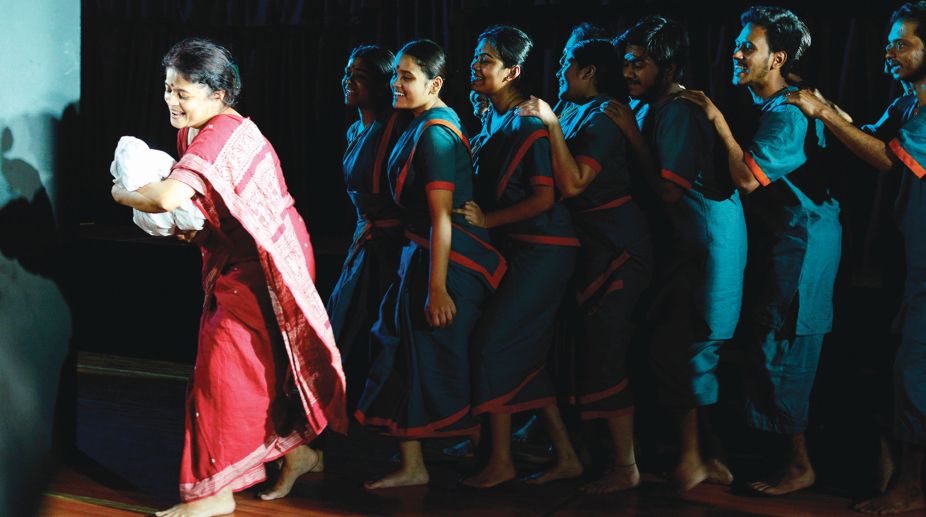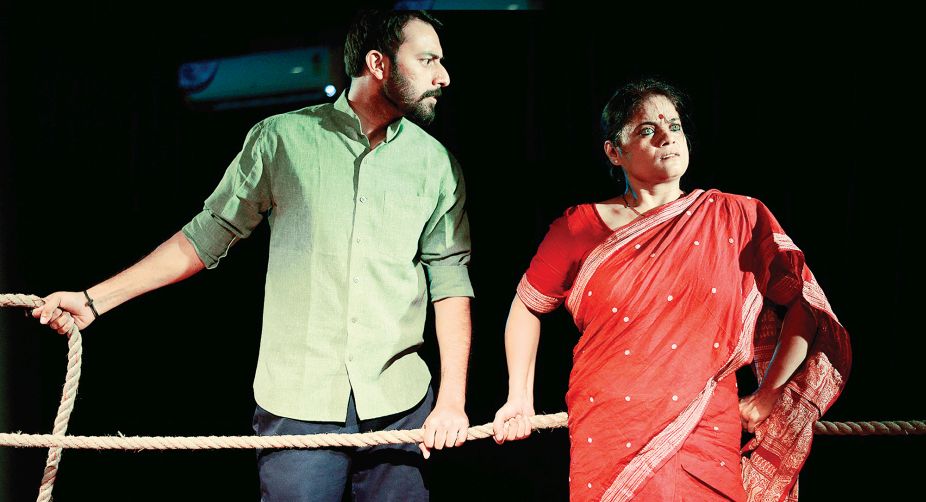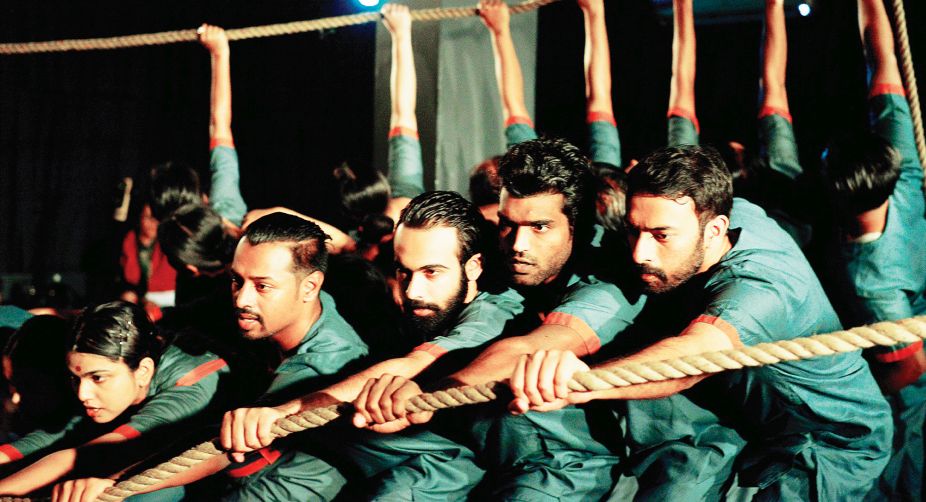Athiya Shetty shows off baby bump in new year post with KL Rahul
Athiya Shetty shares heartwarming moments with husband KL Rahul as they await their baby’s arrival in 2025, celebrating New Year with sweet photos.
Rangakarmee’s latest offering, Atmaj, shone a light on some fundamental questions

Photograph by Pronab Basu.
Trust Rangakarmee to keep exploring not only topical issues and subjects that are in the headlines at a given point of time but also keep evolving its methodology of performance and the infra-structural changes that an evolving presentation demands.
Over the past 42 years, founder-director Usha Chakraborty and her evolving team has never shied away from touching on very bold subjects such as those in Antaryatra, Rudaali, Manasi, Chandalika, Hum Mukhtara and now, Atmaj which is mainly in Hindi with some Bengali and English.
Advertisement
Rangakarmee does not really hold a flag aloft for the woman question as it has done other plays as well such as Dard-e-Naak, which makes a powerful political statement or, Court Matrial many years ago performed only by male actors.
Advertisement
But if one goes through the entire list of plays it has produced, presented and performed, the woman question seems dominant. Last year also, they presented and performed Sapataparnee, which was a collation of seven famous voices of Tagore’s women.
But Atmaj is different. One, it is the first, full-fledged production of the recently renovated and redefined Binodini — Keya Mancha Rangakarmee Studio Theatre in its original premises on Prince Anwar Shah Road. Two, a major slice of its vast ensemble of actors are first-time performers on the professional stage.
Three, it is evolving theatre at its best, which means that the script of the play was created during the rehearsals and workshops by the entire team including debutants.

This also signifies that it leaves space for exclusions, incorporations and inclusions over time for subsequent performances of the same play when the subjects it deals with begin to get dated and new incidents need to be highlighted through theatrical performance.
Atmaj means “born of me”or “son”and deals with two very topical issues revolving around two young women who are still in the news in two different places in the southern parts of the country. The women are not identified by name or place but for one aware of current happenings, the references are quite clear.
Dr Nandini is one of the two young women. She belongs to a very low caste but struggled to rise above casteist oppression by educating herself and becoming a doctor.
But she marries a man of her own choice from a different caste and her paternal family is ready to even kill her. She is almost in a losing battle but when she realises she is pregnant, she rises above everything determined to give her unborn child everything he needs, even without her husband beside her.
The other girl is Fatima who is forced into a terrible shelter for women where “shelter” is reduced to torture, humiliation and oppression of the worst kind perpetrated by the lady who is as cruel as Hitler’s cronies. She was originally a Hindu but converted to Islam because she married a Muslim but it sucked her into a bottomless hole from where there was seemingly no escape.
But she does escape though the play is quiet about what happened to her then.The best innovation of this performance was in its use of ropes not only as a performing prop but also as a character.
The rope becomes a co-actor of sorts that invests the performance with a strange power. When Nandini is giving birth to her baby, her woman friends gather some red and white ropes to cover her symbolically to allow her privacy. This prop too, is an imaginative innovation.
The actors are amazingly versatile because they enrich their acting not only with their voices —fluid, mobile, soft and strong by turns but also with their entire bodies.
The live music is beautiful that keeps to the volatile and changing moods of the play heightened by the live classical alaaps and gats delivered in a mellifluous voice by another elderly debutant in professional singing.

The lighting moves sometimes swiftly and sometimes slowly from extreme darkness to slowly entering light and is not very bright at any moment because brightness would not have worked in the dark ambience of the play.
The proscenium space is innovatively designed to seat the audience in front in a few rows and on one side. The entrance and exits are veiled with black curtains for the actors to enter and exit.
The stage is horizontally split into two levels while there are two pillars on either side which gives the actors the freedom to be as fluid and free in their actions as they would need.
The cast is huge and the way they negotiate the spaces without rubbing against one another is amazing. The stage also defines the way Badal Sarkar used it to allow actors close access to members of the audience which sucks the audience into the proceedings.
The only problem with Atmaj is that it ends all too suddenly, perhaps allowing the audience to draw its own conclusions or take the play onwards through suggestion and recommendations and of course, critique. Besides, a strong and feisty woman like Dr Nandini cannot be identified with a woman who finds her final happiness in motherhood.
Advertisement